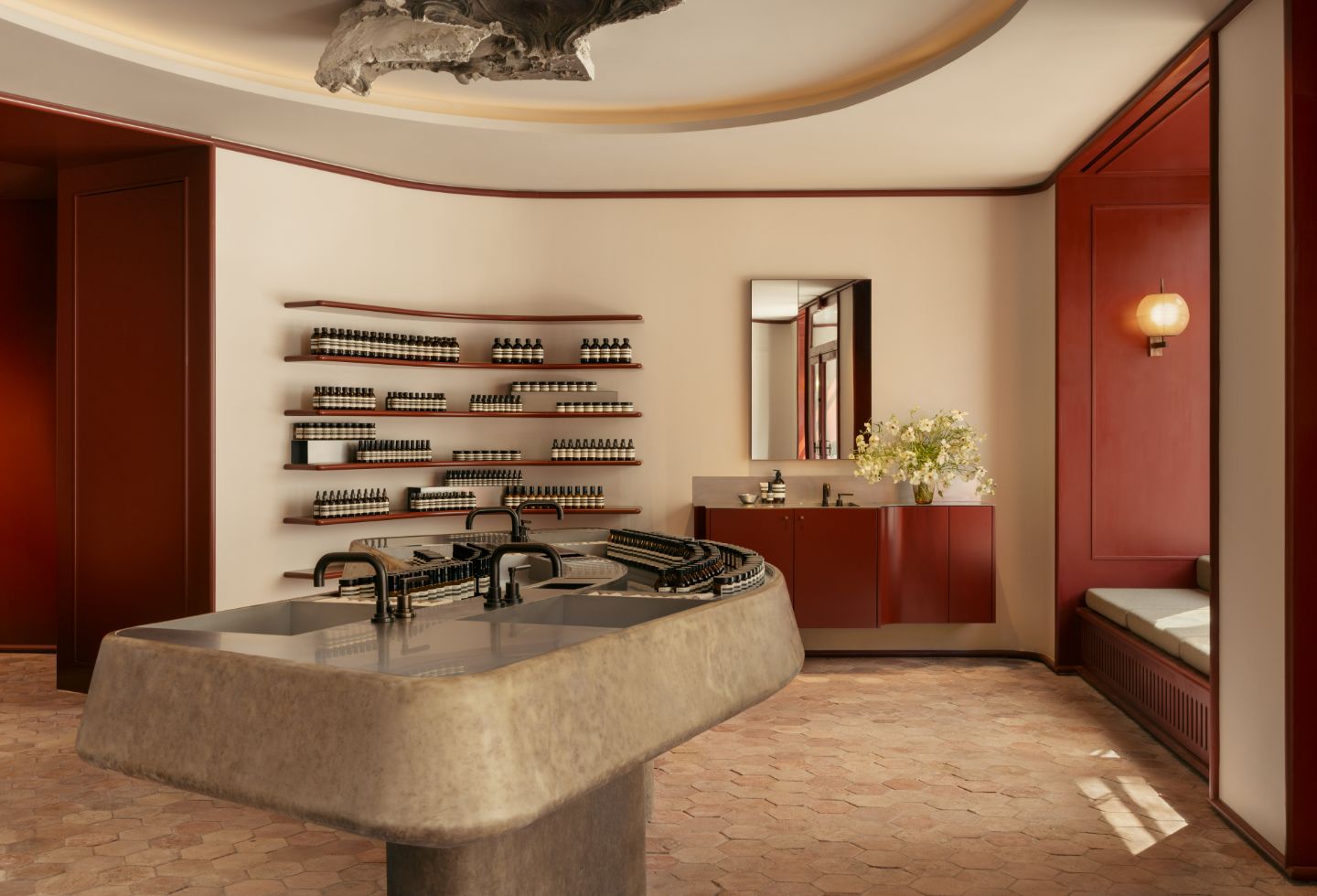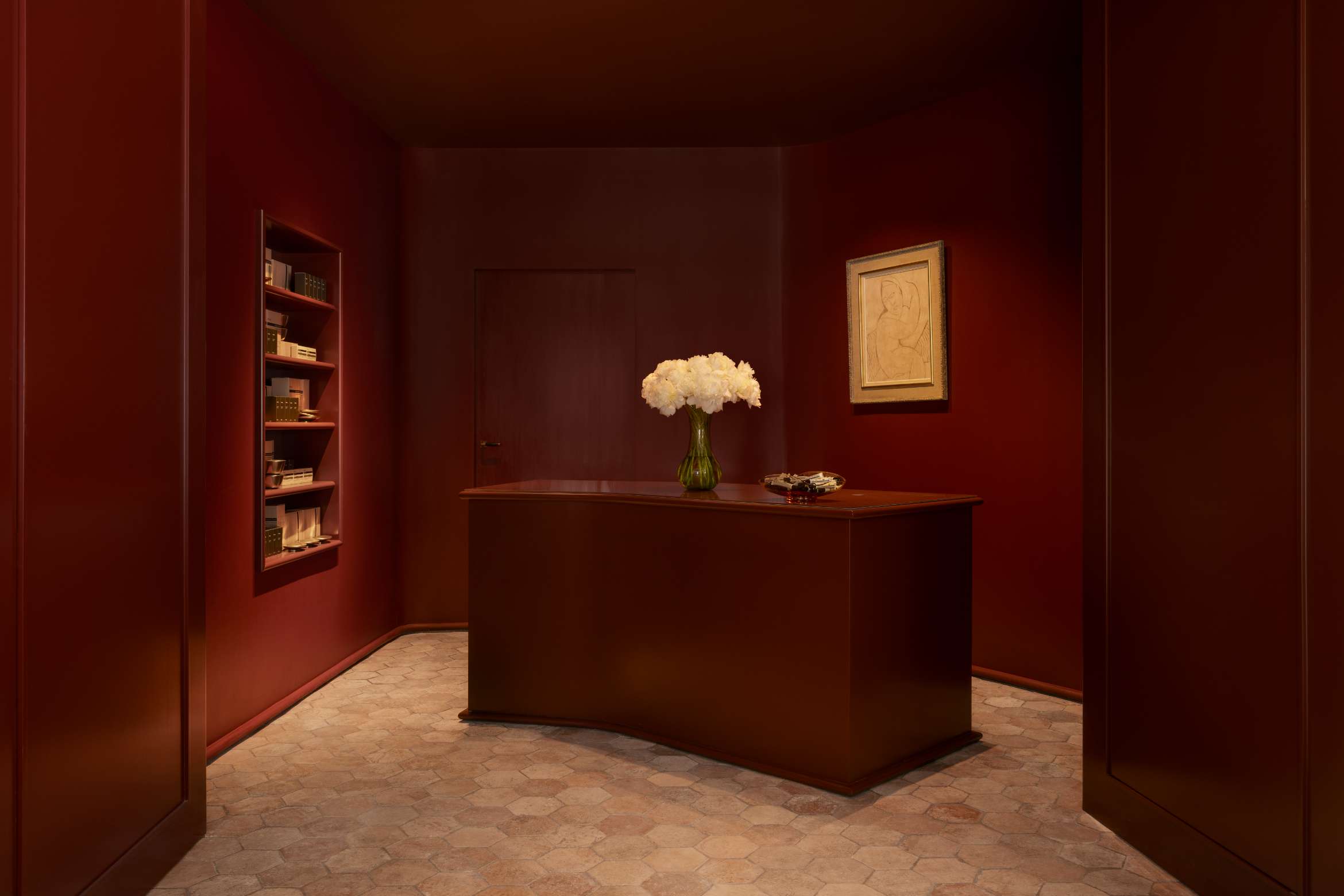At Aesop on Avenue des Ternes in Paris, it can be argued that the interiors emulate the residential quietness of the surrounding environment, while others will simply recall the truism that less is more. If the Parisians know one thing, it is impeccable style and an ability to exceed ephemeral trends and design in a manner that is anything but boring. As such, Austrian architect Jakob Sprenger, represented by Desselle Partners, provides the perfect catalyst.
“We approach every project as a unique entity embedded in its historical, architectural and cultural context,” says Sprenger. “Our mission is to create lasting values that resonate meaningfully with their surroundings.” Each Aesop boutique will often look and feel markedly different from the next, with their emphasis on fitting seamlessly and respectfully into the local context.
Roughly six years ago, Jakob Sprenger and Aesop started their partnership, which has continued to prosper. Sprenger continues: “Aesop and I share values beyond our vision for beauty […] Our most substantial similarity is the aim for domesticity and long-lasting values, to not give in to short-living trends but to create permanence.”

There is a distinct parallel between the brands; the utmost consideration of design detail is tangible in each boutique, product and packaging. The pursuit of utilising organic materials and minimising environmental impact is imperative to the respective companies. “I always admired the elegance of Aesop, the advertisement- and clutter-free environment, the tranquil and subtle luxury, far away from bling and pretentiousness,” says Sprenger.
“When we engage with external architects, we always provide a detailed brief that considers the functional requirements of the space. When it comes to materials and layout, however, the designers are given some creative freedom. We’re curious about their interpretation of the place, and have usually engaged them because we believe they have a certain sensibility or local knowledge that will bear unforeseen fruit,” explains Marianne Lardilleux, Director of Global Retail Design.
Related: Unearthing the liminal

Within this remit, Sprenger has designed a pared back, domestic showroom to sit quietly in its surrounding neighbourhood. The traditional French kitchen, with its terracotta flooring and cabinets covered with multiple layers of thick paint, inspired the configuration and material palette of the remodel. “We aimed to create a feeling of permanence and simplicity,” explains Sprenger. A vast amount of reclaimed tomettes – traditional French hexagonal terracotta tiles – were sourced and anchor the store with their aged imperfections. Taking more than two months to source sufficient antique tomettes for this project, the alternative of ‘artificially aged’ newer products was never a viable option for Sprenger.
Aesop Ternes was sculpted around four nineteenth-century painted gypsum ceiling medallions that are framed and curiously orientated. Originally designed for the Hôtel de la Guillonnière, which was demolished in 1923, the once listless and languorous antique remains were brought back to life when they were suspended above the central sink. “We arranged the antique artworks in a playful juxtaposition with the contemporary sculptural sink. A large elliptical ceiling cut-out highlights the relevance of these artworks and serves as a frame for both the sink below and the medallions above,” explains Sprenger. The differing orientations showcase the remains: a delicately ornamented façade and the savoir-faire of traditional craft.

At each Aesop boutique, the basins are positioned at the heart of the store, to provide a distinctive and convivial environment in which customers experience the products. As a memorable centrepiece for Aesop Ternes, the scale and form of the basin arrangement are informed by the triangular floor plan, which effectively acts as an artwork.
The baroque and expressive curvature of the medallions paired with their patinated hues of beige, brown and red – typical to allegoric paintings – inform the colour palette. The language of texture and colour indeed emulates the spirit of Avenue des Ternes, fostering a feeling of belonging. “The saturated hues and rounded forms coax visitors to slow down and linger,” says Sprenger. The washed walls are juxtaposed by rich, burgundy lacquer – a lacquer that has been applied by hand with a horsehair brush, adding depth to the colour and slight texture.
The coalition between Jakob Sprenger and Aesop is unsurprising, given their mutual proclivity to design spaces that are anything but meagre. Slowly, the continuum of Aesop boutiques and their beautiful designs is taking the world by storm – or, as the French say, petit à petit.





Next up: Sitting prettily sequestered in the mountains of New Zealand

